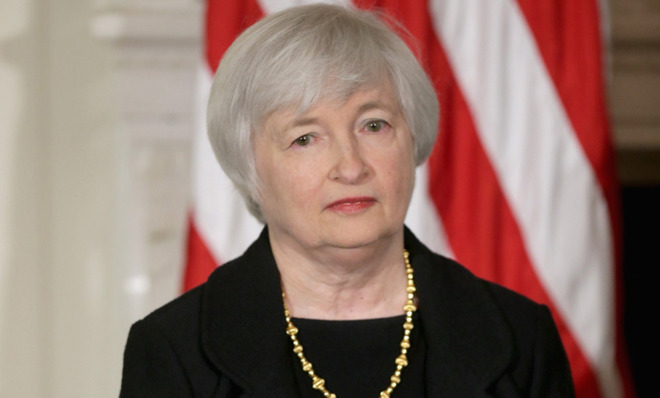Today's GDP numbers prove that America's economic recovery is strengthening
But we're not quite out of the woods yet

Good news: Today's GDP numbers illustrate that the economic recovery is strengthening.
Third quarter real GDP growth was 3.6 percent year-on-year, considerably above the Bureau of Economic Analysis' estimate last month of 2.8 percent, and also half a percent above Wall Street's consensus estimate of 3.1 percent.
That would have been considered decent growth even before the 2008 crisis, after which the economy spent five years suffering from lower growth and high unemployment. But coming now, it provides good evidence that a real recovery may — after five years of lackluster growth — finally be taking hold. Unemployment is still high — but that too is gradually coming down, and initial unemployment claims today also fell strongly.
The Week
Escape your echo chamber. Get the facts behind the news, plus analysis from multiple perspectives.

Sign up for The Week's Free Newsletters
From our morning news briefing to a weekly Good News Newsletter, get the best of The Week delivered directly to your inbox.
From our morning news briefing to a weekly Good News Newsletter, get the best of The Week delivered directly to your inbox.
A lot of economists and analysts — including Larry Summers, Paul Krugman, and myself — have expressed concern that the economy might have fallen into long-term or permanent stagnation. If business and consumer expectations become depressed, and everyone stops expecting growth (perhaps due to a burst housing or stock market bubble), those expectations have a way of becoming reality. If people don't believe there will be growth, then they are more willing to sit on cash or low-risk, low-yield assets like bonds instead of investing in productive activities and businesses. This is what seems to have occurred in Japan multiple times in the last 20 years — lost decades of economic depression.
Fortunately, it is beginning to seem much likelier that America has avoided Japan's fate. The U.S. is still facing some of the same pressures that Japan grappled with in the aftermath of its burst bubbles, in particular, de-leveraging that forces consumers and businesses to use their income to pay down debt instead of investing or spending it, and a dysfunctional financial sector that lacks the ability to allocate capital efficiently to businesses and individuals who need it. But as growth accelerates, expectations of growth are strengthening. Investors who for years were extremely negative about the prospects for growth are turning bullish.
Yet there is a danger to the appearance of a strengthening recovery. Some would say that with the recovery strengthening, now is the time for the Federal Reserve to tighten up its fiscal stimulus to prevent the growth of new bubbles. But the Japanese example shows that this would be misguided. In 2000, and in 2006, the Bank of Japan tightened on the first sign of economic recovery, and twice those first signs of renewed confidence were quickly snuffed out. The economy will be much more resilient to bubbles after a sustained recovery. The Fed should stick to its mandate, and should only consider tapering once unemployment is below 5.5 percent, and inflation above two percent.
A free daily email with the biggest news stories of the day – and the best features from TheWeek.com
John Aziz is the economics and business correspondent at TheWeek.com. He is also an associate editor at Pieria.co.uk. Previously his work has appeared on Business Insider, Zero Hedge, and Noahpinion.


